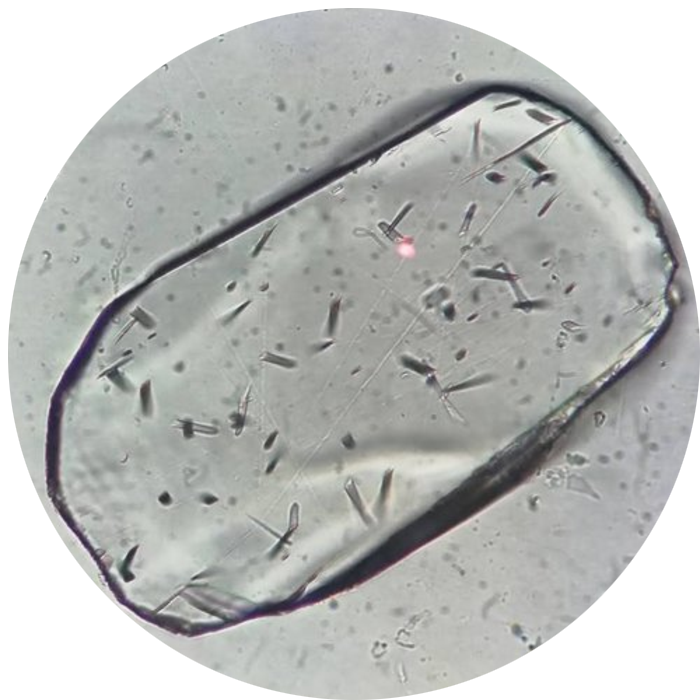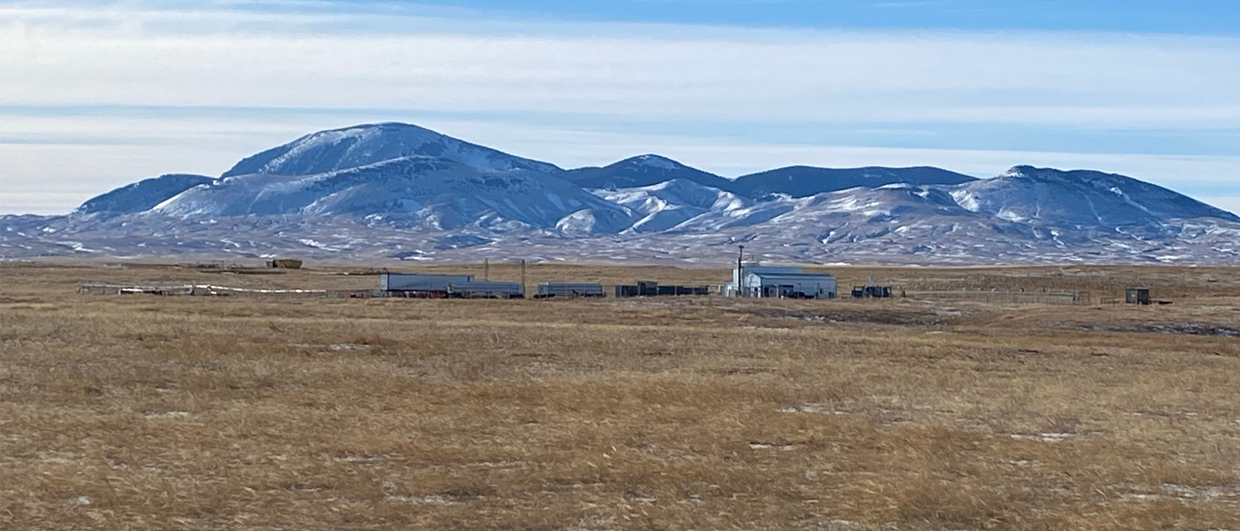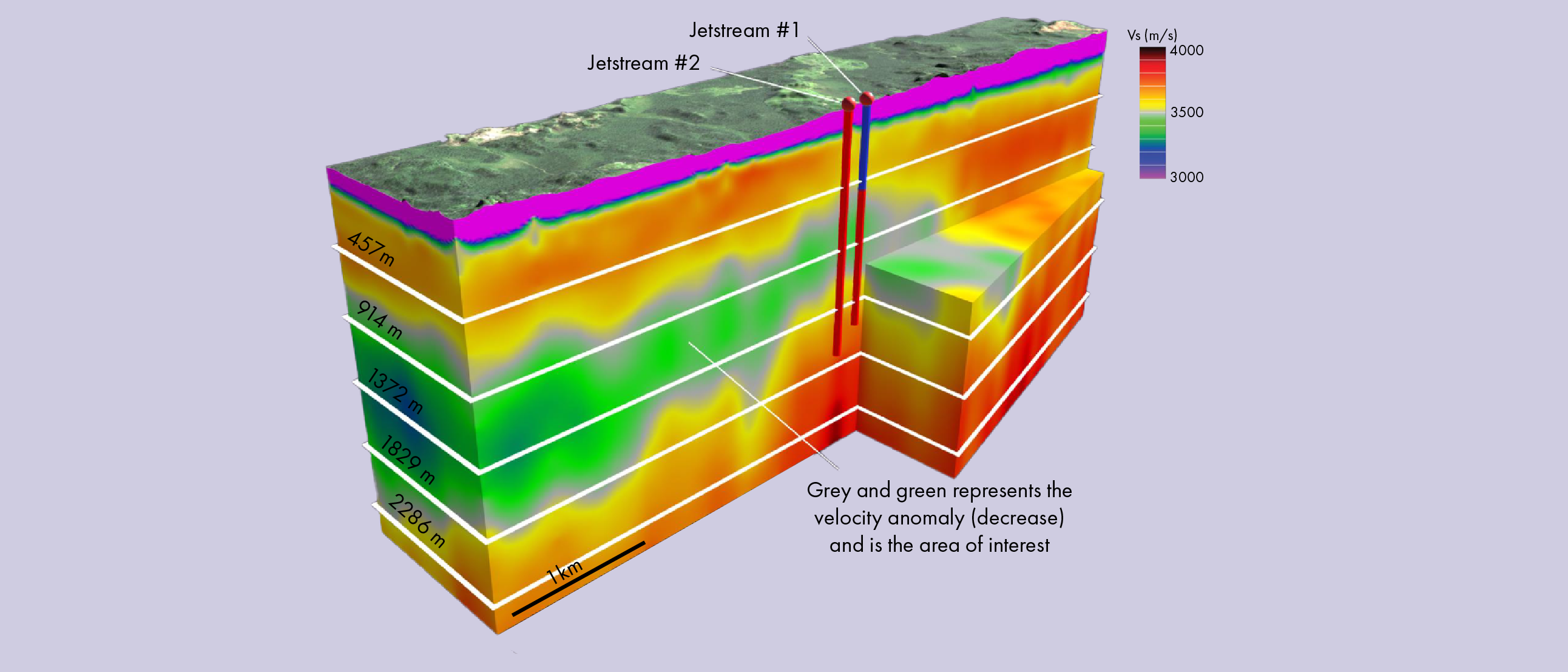24% of the weight of the universe is made up of helium. Yet, on earth it is a rare element. This is problematic because many industries, such as the medical field, tech manufacturing and space programs are heavily reliant on helium owing to its unique properties. Helium is an inert gas with an extremely low boiling point. It reaches liquid state at 4 degrees above absolute zero and hence can be used for cooling to extremely low temperatures.
Only a small portion of helium currently found on Earth is primordial in origin and has been present since the formation of our planet. Most helium formed over geological time by radioactive decay of uranium and thorium. Alpha particles emitted during radioactive decay are in essence helium atoms. Eight helium atoms are formed during the decay series of U to Pb and seven during Th decay. In the photo shown here, evidence of uranium decay in apatite can be seen.
Almost like a petroleum play
In contrast to hydrocarbon source rocks which are rich in organic material, a good helium source are siliciclastic (meta)sediments enriched in heavy minerals. Yet, the rest of the play system is very similar and helium and hydrocarbons can be found together.
Due to the long half-lives of uranium and thorium, it takes an extensive period of time to accumulate significant quantities of helium in their source minerals. Substantial heat is then required to release helium from its source mineral, after which fluid flow is needed to pick up the helium present in the pore space and transport it further through the subsurface. If the helium-enriched fluid becomes trapped in a rock with good reservoir properties and an exploration geologist manages to find it, the reservoir can be produced.
Serendipitous finds
Virtually all helium produced to date was transported to its trap by hydrocarbons and discovered by accident while exploring for natural gas. Concentrations as low as 0.3% helium in natural gas can be traded profitably once separated. The United States, Algeria and Qatar are currently among the largest helium producers. Globally, Qatar has the largest estimated helium reserves at 10 billion cubic meters. However, it hasn’t fully capitalised on its production potential yet, making the USA the largest producer at the end of the day.
There is no room for complacency though. Helium reserves from the long-serving fields in the USA are rapidly dwindling while global demand is soaring at the same time. This has created a demand for a new industry that is specifically exploring for helium, rather than solely relying on serendipitous discoveries of the noble gas alongside hydrocarbons. Better yet, this gives the opportunity for ‘green’ helium exploration, where helium is mainly associated with nitrogen rather than hydrocarbons or CO2, hence giving the gas a lower carbon footprint.

USA
Targeted helium exploration has kicked off globally with large projects currently ongoing in Africa, Australia and North America. In the USA, new helium fields are being developed in Arizona by Desert Mountain Energy and Colorado by Blue Star Helium, both in close proximity to depleted historic fields. These assets are predicted to come online this year.
More remarkable is the exploratory work by Pulsar Helium in northern Minnesota, in a region traditionally known for iron ore mining. In 2011, a borehole targeting nickel had an unexpected blowout of non-flammable gas. Gas flowed for 4 days with no apparent reduction in pressure. According to David Oliver, who was tasked to cap the borehole, the gas was rushing out at such speed that it ‘screamed like a jet engine’. In February this year, Pulsar Helium drilled what they coined the Jetstream #1 appraisal well, measuring concentrations up to 13.8% helium along with CO2 and N2. Their next step is to flow test the well.
Tanzania
Southwest Tanzania is another emerging helium hot spot. Exploration kicked off when analyses showed excessive helium degassing from hot springs associated with the East African rift system. Two companies, Helium One and Noble Helium, have each drilled exploratory wells in the Rukwa basin in the past year. The wells are located near the basin margin fault closure. The helium is contained in multiple shallow, stacked reservoirs. Gas shows are both present in the rift infill sediments, with free gas occurring as shallow as 85 m below the surface, as well as in the fractured granitic basement at about a kilometre depth. This is true ‘green’ helium, where nitrogen is the carrier gas and only traces of CO2 and no hydrocarbons are present.
Australia
Last year, Australia ceased LNG production from the Baya-Undan field in the Timor Sea. As a consequence, this simultaneously halted the co-production of helium, the only domestic source. Central Petroleum now plans to fill this gap in the market by building a helium recovery unit near the Mereenie gas field in the Amadeus Basin, southwest of Alice Springs. The Mereenie gas stream contains only 0.2% helium. However, Central Petroleum is due to drill 3 wells in nearby fields with much higher prognosed concentrations.
However, the highest ever recorded helium concentration (17.5%) was paradoxically discovered while drilling Australia’s first dedicated natural hydrogen wells. Gold Hydrogen drilled 2 wells on the Yorke Peninsula near Adelaide late last year. The preliminary results are positive with regards to permeability and gas flow to surface and the company is now proceeding with an extended production test.
In summary, although multiple helium discoveries have recently been made, this is only a first step. For most of these finds, exact reserves and producibility still have to be proven. However, it is exciting to see that helium exploration is becoming an independent industry that will hopefully guarantee supply for the decades to come.





